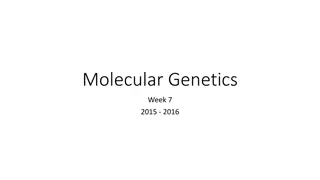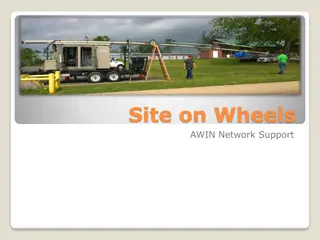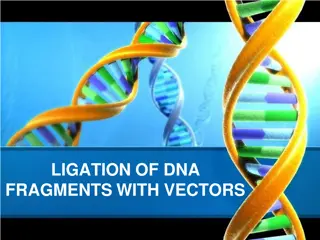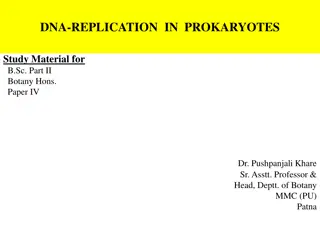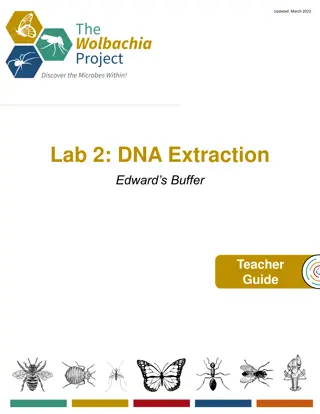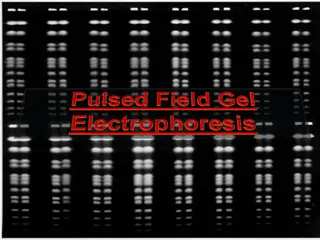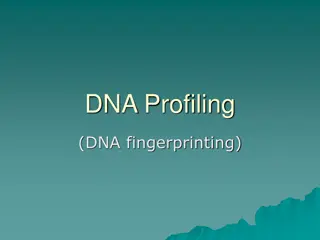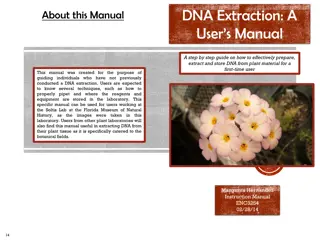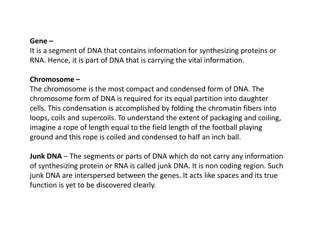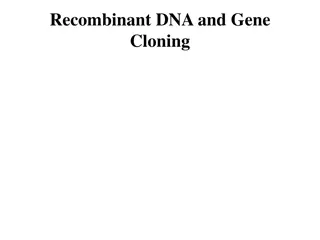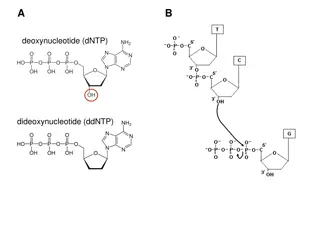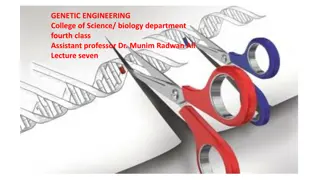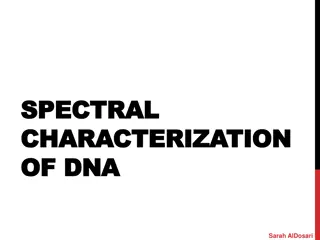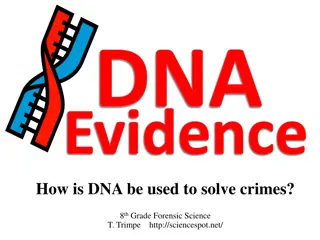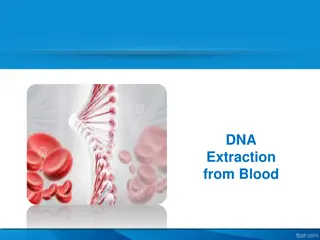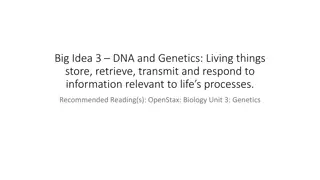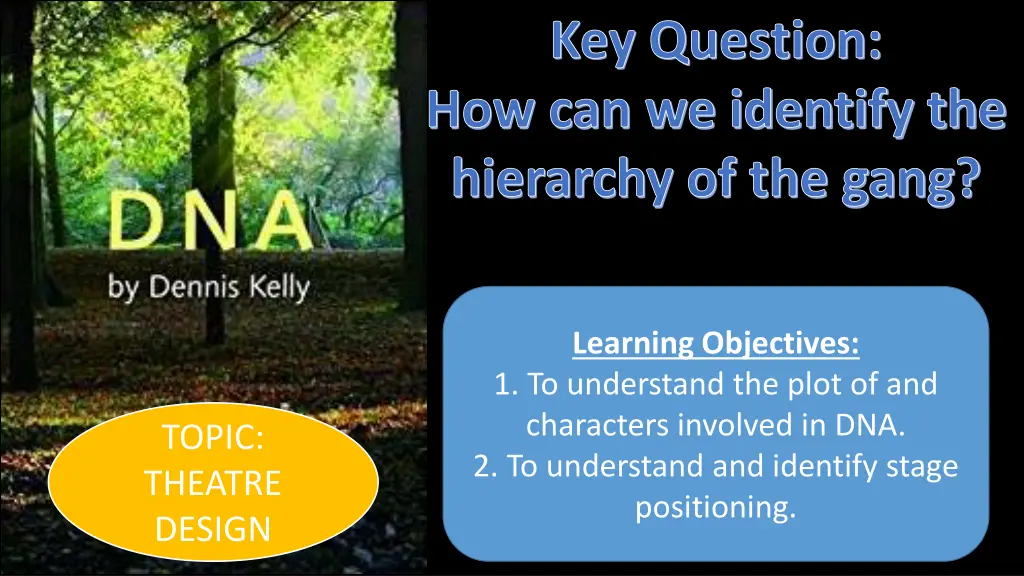
Unveiling Gang Hierarchy in Theatre Production
Explore the intricacies of gang dynamics within the riveting play "DNA" by Dennis Kelly. Discover the characters and their roles as a group of teenagers grapple with guilt, manipulation, and power struggles after a serious incident. Unravel the hierarchy within the gang and analyze the relationships between key characters on stage.
Download Presentation

Please find below an Image/Link to download the presentation.
The content on the website is provided AS IS for your information and personal use only. It may not be sold, licensed, or shared on other websites without obtaining consent from the author. If you encounter any issues during the download, it is possible that the publisher has removed the file from their server.
You are allowed to download the files provided on this website for personal or commercial use, subject to the condition that they are used lawfully. All files are the property of their respective owners.
The content on the website is provided AS IS for your information and personal use only. It may not be sold, licensed, or shared on other websites without obtaining consent from the author.
E N D
Presentation Transcript
Key Question: How can we identify the hierarchy of the gang? Learning Objectives: 1. To understand the plot of and characters involved in DNA. 2. To understand and identify stage positioning. TOPIC: THEATRE DESIGN
What do you think of when you see the word gang ? Create a mind map to show all the words and ideas that you think of when you see the word gang .
DNA by Dennis Kelly https://www.bbc.co.uk/teach/class-clips-video/plot-overview-dna-by-dennis-kelly/zf6kjhv A gang of teenagers do something bad, really bad, then panic and cover the whole thing up. But when they find that their cover-up makes them closer as friends, will they let an innocent man be framed? The Gang: Mark, Jan, Leah, Phil, Lou, John Tate, Danny, Richard, Cathy and Brian The Victim: Adam Setting: Takes place in a street, a field and a wood
Characters Mark and Jan Narrators less assertive than the others Leah Talks to Phil but gets no response She is insecure and tries to do the right thing Phil Rarely speaks but eats all the time eventually becomes the gang leader manipulative John Tate Classic bully, original leader of the group but can t deal with the situation so leaves Cathy No remorse, confident/cocky, becomes the leader at the end of the play Richard Potential leader but John Tate puts him down, negative, eventually replaces Leah as the person who gets no response from Phil Brian Weak, bullied by the group, feels really guilty Danny Sensible, thinking about his future (wants to become a dentist). Lou A follower, speaks using short sentences, becomes friends with Cathy at the end Adam The victim, bullied and murdered
Who is the gang leader Who is the gang leader? ? Read the extract on page 5 and answer the questions underneath. TIF: Put the three characters (John Tate, Lou & Richard) in order of most powerful to least powerful.
Correct spelling: CENTRE
Proxemics Proxemics Show the relationship between characters on stage. Generally, the closer the characters are, the closer the relationship. If the characters are far apart, it can suggest they do not have a close relationship.
Performance - Adams death (pg7-8) Teacher will choose students to perform the scene where Jan and Mark are explaining what has happened to Adam on the lead up to his death. Whilst watching, as a director, consider how you would effectively use proxemics and levels to show the relationships and status between the three characters. Once you have considered the use of proxemics and levels, answer the questions in your booklet on page 6. TIF On the diagram of the stage on page 9, show where you would position Jan, Mark and Adam whilst Adam is on the Grille and Jan and Mark are throwing stones at him. Consider who is the focal point, proxemics and levels. Use the letter A for Adam, J for Jan and M for Mark.
Folders Instructions Look at where your target sticker is and decide where it is best to write your name! Name and Form (9z) Drama Ms Pearson Put your front cover inside the front of your plastic wallet Put your baseline test in the first pocket of your folder
Lesson 2 - SILENT STARTER: Stage positioning recap On your whiteboard draw a grid like this: Draw X in centre stage Draw a stickman downstage right Draw a heart centre stage left Draw a musical note upstage right
Key Question: How can I use lighting to create suspense? Learning Objectives: 1. To understand and identify types of theatre lighting 2. To create a lighting plot for a scene from DNA TOPIC: THEATRE DESIGN
Key Words: Mood, atmosphere, emotion, tension In your booklets, complete the gap fill about lighting design. Page 11. EXT Complete the second gap fill.
What is a lighting designer? A Lighting Designer will work with the Director, Artistic Director and/or Lighting Technicians to create the visuals for lighting, lasers, strobes, spots and sometimes video screens for a performance. Experienced pay/salary: up to 225 a day. What are the main responsibilities of a Lighting Designer? *Work with the creative team to come up with ideas *Design the lighting needed for the performance *Be aware of health and safety aspects *Write a lighting plot/script to note where there are any lighting changes *Attend technical rehearsals *Be aware of budgets and energy use
Activity - Types of lights https://www.youtube.com/watch?v=e7Pd0nqkDsc Turn to page 12 in your booklets. Whilst watching the video, match the type of light to the correct function of the light.
Peer mark Fresnal A softer edged effect. It's useful for good overall light. Follow spot a hard edged beam used to follow actors around the stage. Spotlight a hard edged beam used to light characters or elements onstage Barn doors Used to shape the beam of light Par can Simple lantern used in live theatre and music concerts. Flood light - produces a clear wide-angled light, but there s little control over the spread of the light. Strobe - a flashing light, used for special effects. It produces a jerky effect on the movements of actors when used on its own. Birdie Small lantern placed on the set or at the front of the stage. Gels A coloured film that is placed in front of a lantern in order to change the colour of the beam.
WHITEBOARD TASK Homework to learn the spellings and definitions of the different types of theatre lighting. Please see SMHW Due: 6th October (next lesson) Which colour would you associate with the following words? E.g. Purity = White
https://www.youtube.com/watch?v=QUKDU3r6MYY Activity Recap the extract where Adam falls down he grille. Read on page 13. Then annotate the script with at least 5 lighting choices that you would choose if you were the lighting designer for this play. There is an example on the page. Include the type of light, the colour, the brightness and the direction it would be pointing in (e.g I would use a stark red flood light across the whole stage, covering all the characters). TIF Explain WHY you have made this creative decisions.
Activity Draw and label 3 lighting designs suitable for the extract. Make sure to include the characters and necessary set. E.g. the grille. Focus on colour, direction, mood/atmosphere. There is an example in your booklets. TIF Explain the effect that your chosen use of lighting will have on the audience.
PLENARY WHAT TYPE OF LIGHT BEGINS WITH AN B? WHAT TYPE OF LIGHT IS USED TO FOLLOW ACTORS AROUND THE STAGE? WHAT LIGHTING PROJECTS IMAGES ONTO THE STAGE?
Key Question: How do I identify areas and configurations of the stage? Learning Objectives: 1. To understand and identify types of stage configurations and elements of the backstage of a theatre 2. To design a backdrop for DNA TOPIC: THEATRE DESIGN
Silent Starter Match the key words in the box at the bottom of the page to the correct definition. TIF Write the definition of the 3 key words. AUDIENCE
Silent Starter answers Proxemics The distance between characters to represent their relationship. Levels When actors use different heights used onstage to show status. Gobos A light that is used to project an image or a shape onstage. Strobe A flashing light, used for special effects. It produces a jerky effect on the movements of actors. Status A characters social ranking (hierarchy). Focal Point The area onstage/the character that should have the audience s attention. TIF Centre stage The middle of the stage Barn doors Metal panels used to shape the beam of light Follow spot A light that is used to follow an actor around the stage.
Stage Configurations Write the correct name for the type of stage described. TIF Write a positive and a negative for each stage configuration
Stage Configurations Write the correct name for the type of stage described. TRAVERSE IN-THE-ROUND PROSCENIUM ARCH THRUST TIF Write a positive and a negative for each stage configuration
ACTIVITY Read the extract. Choose a stage configuration which you think is most appropriate for the scene and give your reasons why. E.g. I think theatre-in-the round would best suit this scene because the audience feel more immersed in the action and this may make them feel like they are part of the cover-up. WRITE IN FULL SENTENCES TIF Use all the key terminology in the box.
BACKSTAGE Backstage is the part of the stage and theatre which is out of the sight of the audience. The service areas of the theatre, behind, beside or underneath the stage.
Backdrop A backdrop is a painted piece of cloth that is hung behind the stage in a theatre as part of the scenery.
WINGS, DROP CLOTHS AND FLIES A drop cloth is a curtain that can be lowered and raised onto a stage from the flies, often used as background scenery https://www.youtube.com/watch?v=-MV_GfO6D4w A fly system is a system of rope lines, pulleys and counterweighs within a theatre that enables the stage crew to fly (hoist) curtains, lights, scenery, stage effects and, sometimes, people.
ACTIVITY You are taking on the role of a set designer, create an appropriate backdrop for the extract. Consider where it is set and the colours you can use to create an appropriate atmosphere. TIF Explain why you have made these choices.
PLENARY on your whiteboards Which stage configuration has the audience on three sides? What is the name of the rope system that pulls up the drop cloth? Which stage configuration is like a catwalk?
Key Question: Learning Objectives: 1. To understand and identify types of stage configurations and elements of the backstage of a theatre 2. To design a backdrop for DNA TOPIC: THEATRE DESIGN


